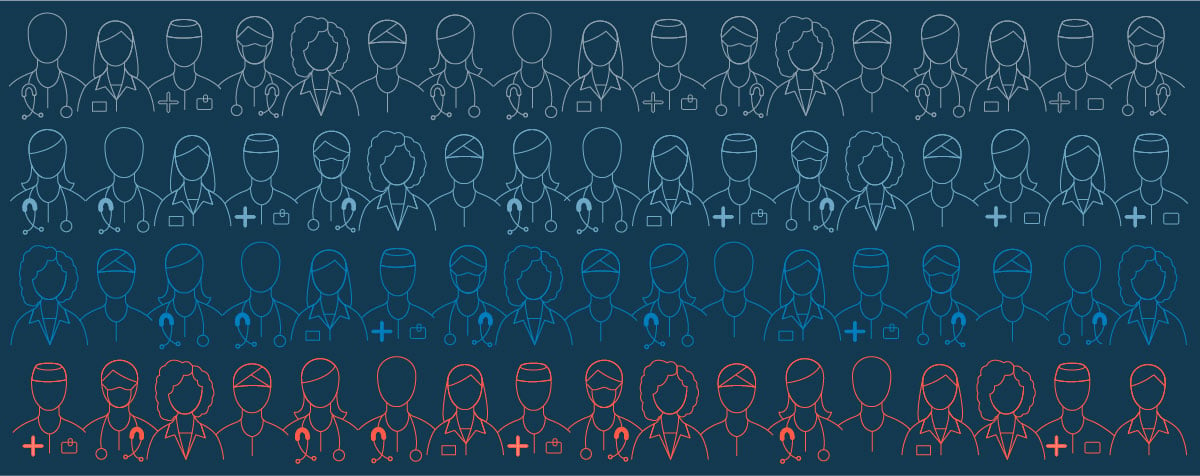
Clinical trials are the linchpin of how therapies are approved. But too often clinical trials do not well represent the patient population that will take the drug in the real world. Differences between people – including ethnic origin, gender, and age, for example – can lead to different responses to a therapy, so it’s important that these differences are accounted for in trial design.
I believe that fostering strong connections – between patients, providers, life sciences and real-world data organizations – can improve the diversity of patients included in clinical trials. Let me walk you through a few ideas that are top of mind for me.
Garnering trust with patients can help overcome cultural barriers
There are communities that may benefit from therapies being studied but that may be skeptical of the healthcare and research systems and as a result, underrepresented in clinical trials.
Establishing trust with patients can help overcome this barrier. Trust is not something you can build overnight but I think there are a couple ways to help patient communities believe in and become engaged in research activities.
The first is to achieve diversity between the patient and the on the ground team running the trials. The staff at investigative sites are the touchpoints for the community and if they reflect the diversity of the patient population they are trying to attract, there is greater inherent connection.
Enhanced patient education and engagement is also key. Educating the community on the importance of participation in clinical trials can help patients feel empowered to have a role in shaping the future of healthcare. And it’s important that this is a bidirectional relationship and that we not only educate patients but also ensure that their voices are heard and represented too.
Amplifying patient voices is something the team at The University of Maryland’s PATIENTS Program is dedicated to. We’ve been honored to partner with the PATIENTS Program in helping to advance equity and outcomes for patients receiving care in the community oncology setting – and having patient voices in the conversation is critical to this work.
Establishing partnerships with community oncology centers can help include a larger swath of patient populations in trials
The location of clinical trials can skew representation. Many clinical trials are run at academic health centers, which are often in metropolitan areas where populations are vastly different than rural communities. This means the population taking part in a clinical trial may not match the population taking the drug in the real world.
There is an opportunity to establish partnerships between community oncology centers and academic health centers, which can better ensure that more vast patient populations are represented in critical research efforts.
There is also opportunity for life sciences to sponsor more research directly in the community setting. By conducting research with community oncology centers, this not only means that this diverse patient population is represented but it also gives patients access to participate in clinical trials close to home, prompting better engagement. US Oncology Research is an example of one such organization conducting clinical trials in the community, and they have enrolled more than 82,000 patients in cancer clinical trials across the country.
Using real-world data as an input in clinical trials can aid in connecting trial sponsors with representative populations
Historical views can bias trial design, as looking exclusively to the past to inform the future is not objective in nature.
To address this, real-world data can play a tremendous role in helping trial sponsors access information from representative populations. This requires connection between real-world data companies and the life sciences companies in drug discovery and development.
At Ontada, we are a steward of real-world data that can be relied upon to understand treatment patterns and outcomes for populations receiving the therapies in real-world settings. We partner with life sciences to help them embed real-world data as an input into clinical trial design.
For example, when sponsors are designing trials, we can help them take their inclusion/exclusion criteria, apply it to a real-world data set and then run a sensitivity analysis to see if any populations are being excluded.
Randomized clinical trials are the most common way that we study potential new therapies. But in cases where is it impossible or impractical to increase diversity of trials, we should not lose sight of the fact that there are other methods to evaluate safety and efficacy. One example is External Control Arms, where real world-data is used to create a cohort of patients to use as a comparator arm. Real-world data and evidence can help us provide a more representative view of patients, and hopefully help us to better understand how different therapies affect different subsets of the population.
The digitization of data has turned what used to be a black box into a resource with massive potential, as we can capture and analyze information from patients in the real world in real time. But in isolation, this data can’t have real impact. A great illustration of this is a study where we showed through more regular connection between our data products and our clinical pharmacy teams, we were able to increase clinical trial enrollment in our sites between 30 and 177%.
As you can see, I’m a strong believer in the power of relationships, as no single entity can solve for this systemic issue on its own. But by forming meaningful connections that span the industry, we can each play our own important role in improving diversity in clinical trials. And in doing so, we can move cancer care forward – for everyone.